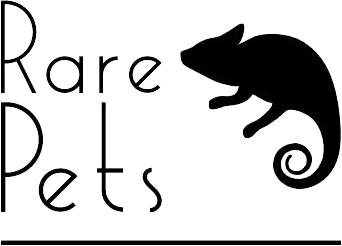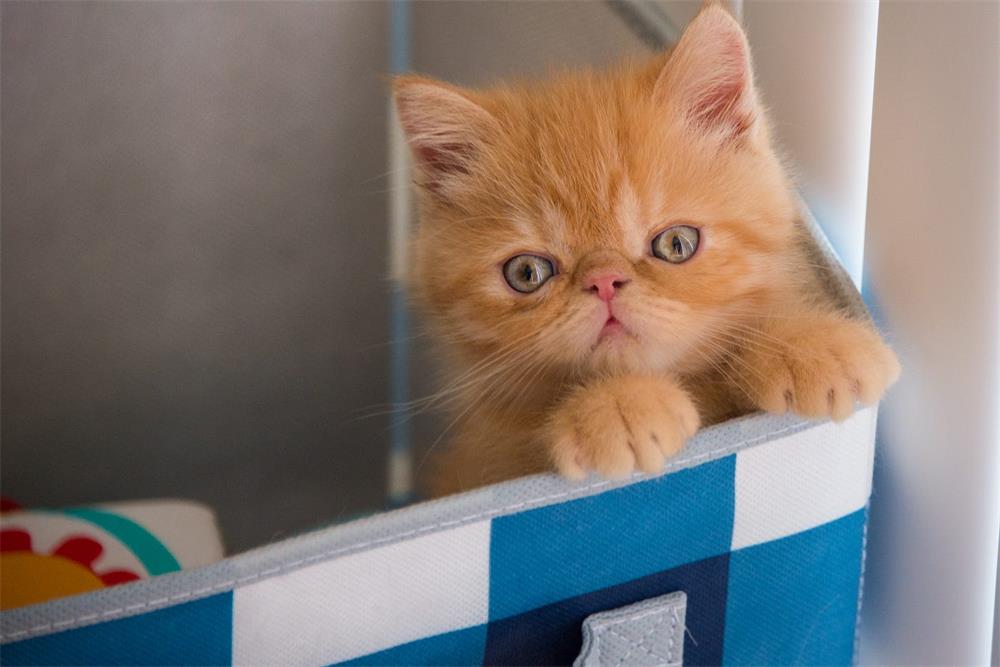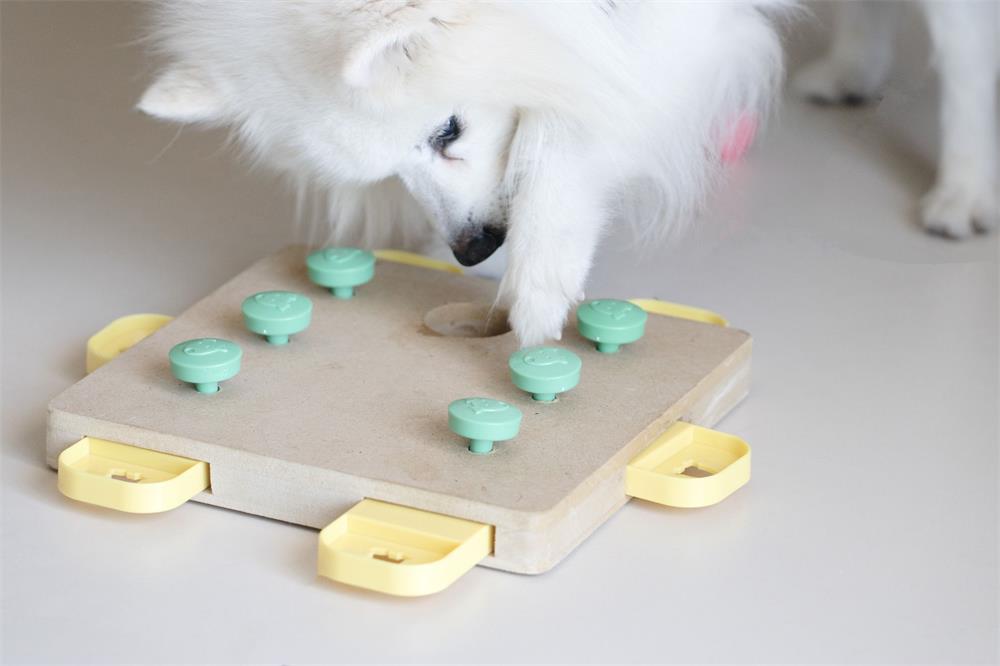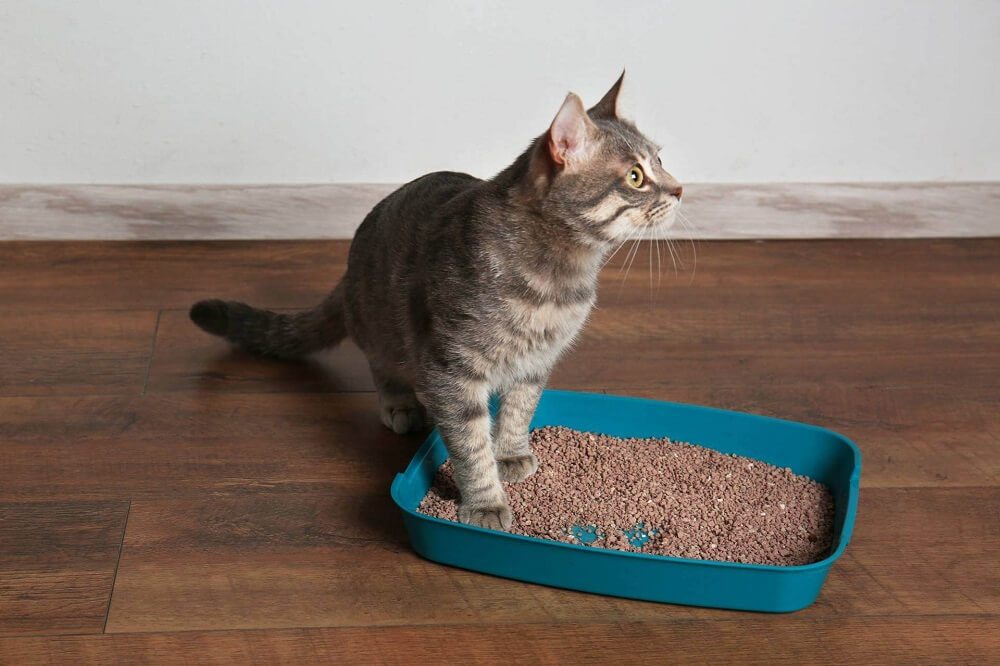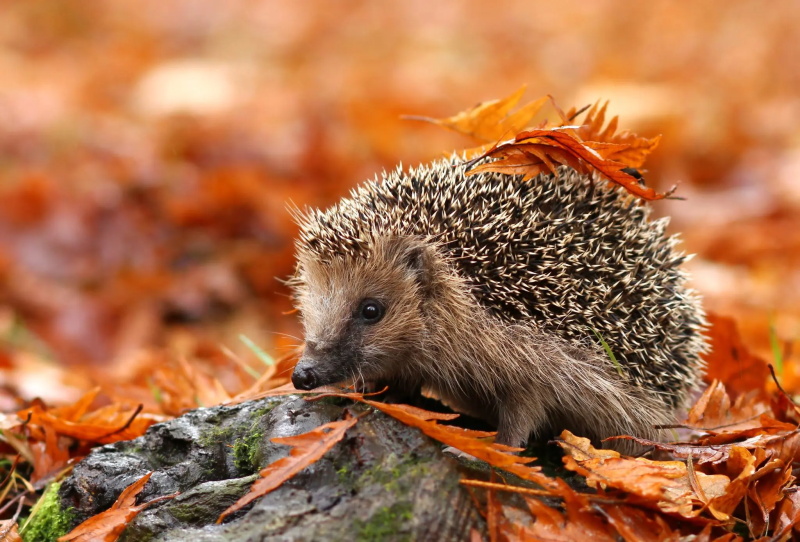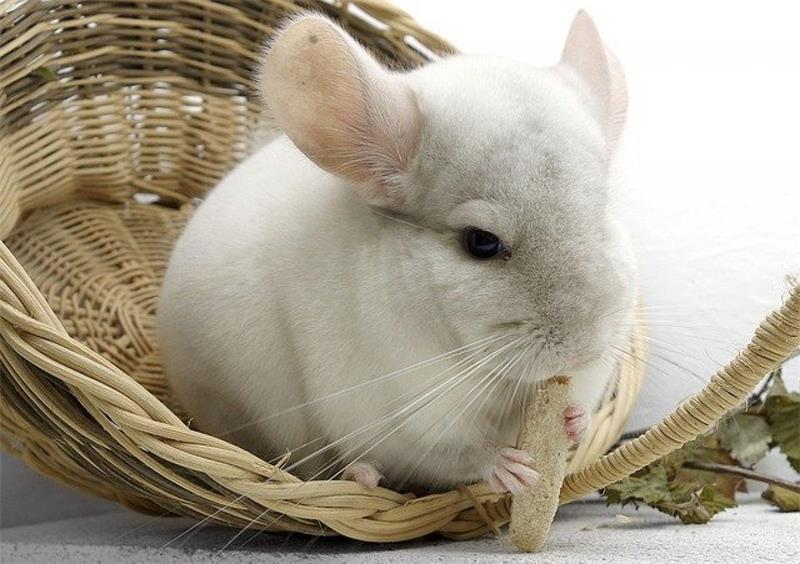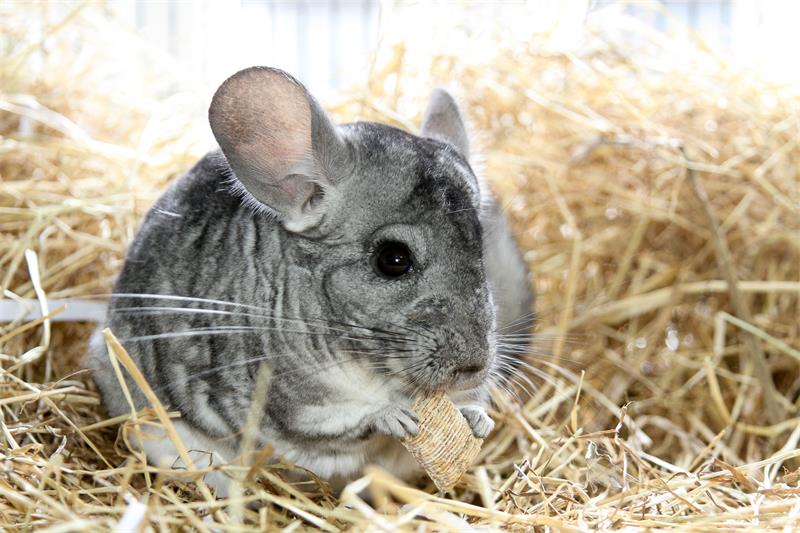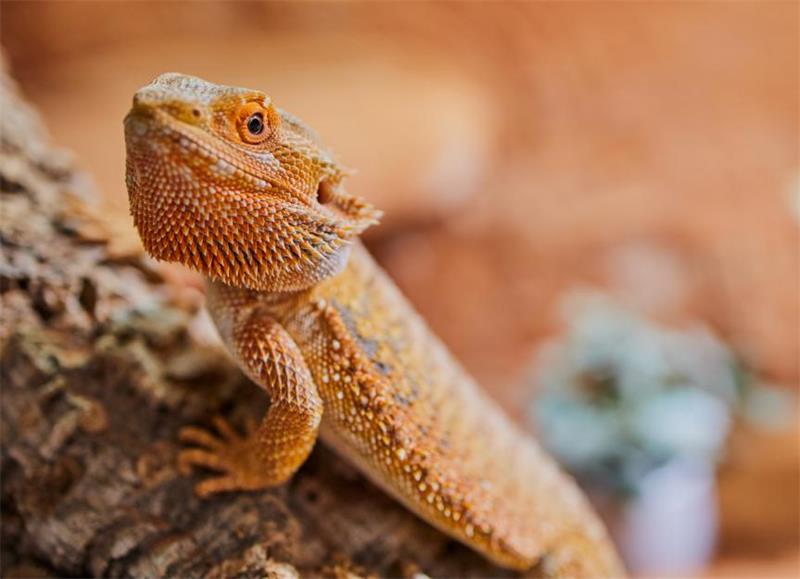
Table of Contents
Bearded dragons are popular and friendly reptiles that make great pets for many people. They are native to central Australia, where they live in arid and semi-arid habitats. They are omnivorous, meaning they eat both plant and animal matter. They are also known for their distinctive beard, which they can puff up when threatened or excited.
But how long do bearded dragons live? And what can you do to help them live longer and healthier lives? In this essay, we will answer these questions and provide some tips on how to care for your bearded dragon properly.
How Long Do Bearded Dragons Live?
The lifespan of a bearded dragon depends on many factors, such as genetics, diet, environment, health, and care. In general, bearded dragons can live anywhere from 5 to 15 years, with an average of 10 years in captivity.
In the wild, bearded dragons face many challenges and threats that shorten their lifespan. These include predators, parasites, diseases, injuries, droughts, fires, and competition for food and shelter. According to some studies²⁴, the average lifespan of a wild bearded dragon is between 5 and 8 years.
In captivity, bearded dragons have a much better chance of living longer and healthier lives. They have access to consistent food, water, shelter, and veterinary care. They also have fewer predators and stressors. Some captive bearded dragons have been reported to live up to 15 years, and the oldest bearded dragon on record lived to 18 years.
However, captivity also poses some challenges and risks for bearded dragons. Many captive bearded dragons suffer from poor husbandry, which means improper care and management. Poor husbandry can lead to various health problems, such as metabolic bone disease, kidney disease, egg binding, mouth rot, respiratory infections, parasites, obesity, and more. These health problems can reduce the quality and quantity of life for your bearded dragon.
Therefore, it is very important to provide your bearded dragon with the best possible care and environment. This will not only make your bearded dragon happier and more comfortable but also increase their chances of living a long and healthy life.
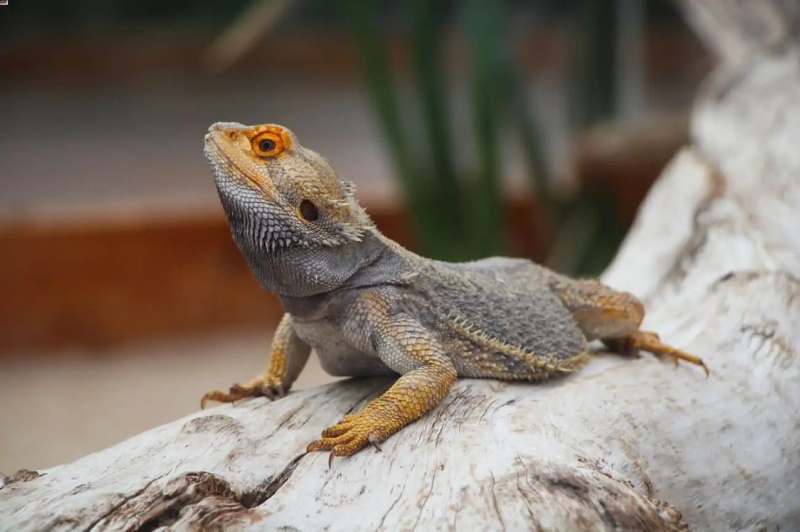
How to Extend Your Bearded Dragon’s Life Expectancy
There are many things you can do to help your bearded dragon live longer and healthier lives. Here are some of the most important ones:
Provide a Balanced Diet
A balanced diet is essential for your bearded dragon’s health and well-being. A balanced diet should include both animal-based and plant-based foods that provide your bearded dragon with the necessary nutrients, such as protein, calcium, vitamins, minerals, and water.
The proportion of animal-based and plant-based foods depends on your bearded dragon’s age. Young bearded dragons need more protein for growth and development, so they should eat mostly insects (80%) and some vegetables and greens (20%). Adult bearded dragons need less protein and more fiber for digestion and health maintenance, so they should eat mostly vegetables and greens (80%) and some insects (20%).
Some of the best insects for your bearded dragon include crickets, dubia roaches, silkworms, hornworms, superworms, mealworms (only occasionally), waxworms (only occasionally), earthworms (only occasionally), grasshoppers (only occasionally), moths (only occasionally), cockroaches (only occasionally), slugs (only occasionally), spiders (only occasionally), etc.
Some of the best vegetables and greens for your bearded dragon include collard greens, kale, mustard greens, dandelion greens, turnip greens, escarole, endive, bok choy, watercress, parsley, cilantro, basil, mint, oregano, thyme, rosemary, broccoli, cauliflower, brussels sprouts, cabbage, carrots, parsnips, sweet potatoes, squash, pumpkin, zucchini, cucumber, green beans, peas, corn, mushrooms, asparagus, celery, etc.
You should avoid feeding your bearded dragon foods that are toxic or harmful to them. These include avocado, rhubarb, onion, garlic, chives, leeks, shallots, spinach, beet greens, swiss chard, potato, tomato, citrus fruits, grapes, raisins, bananas, strawberries, kiwi, pineapple, mango, papaya, watermelon, cantaloupe, honeydew melon, etc.
You should also avoid feeding your bearded dragon foods that are high in fat, sugar, salt, or preservatives. These include processed meats, cheese, dairy products, bread, pasta, rice, cereals, nuts, seeds, chocolate, candy, etc.
Additionally, you should avoid feeding your bearded dragon insects that are venomous, poisonous, or harmful. These include fireflies, scorpions, bees, wasps, hornets, elder bugs, centipedes, millipedes, etc.
You should also avoid feeding your bearded dragon insects that are too large for them to swallow. A good rule of thumb is to feed insects that are no bigger than the space between your bearded dragon’s eyes. Feeding insects that are too large can cause choking, impaction, or injury to your bearded dragon’s mouth and digestive system.
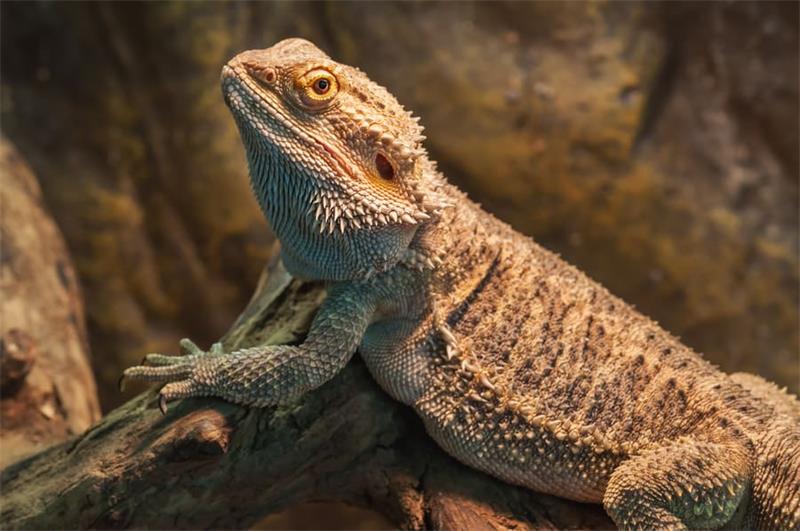
Provide a Suitable Enclosure
A suitable enclosure is another essential factor for your bearded dragon’s health and well-being. A suitable enclosure should provide your bearded dragon with enough space, security, comfort, and stimulation.
The minimum size of the enclosure for an adult bearded dragon is 4 feet long by 2 feet wide by 2 feet high (120 cm x 60 cm x 60 cm). However, bigger is always better. You can use a glass terrarium, a wooden vivarium, or a plastic tub as long as it has adequate ventilation and access.
The enclosure should have a substrate that is safe and easy to clean. Some of the best substrates for bearded dragons include reptile carpet, paper towels, newspaper, ceramic tiles, slate tiles, etc.
You should avoid substrates that are loose or small enough to be ingested by your bearded dragon. These include sand, gravel, wood chips, bark chips, corn cob bedding, walnut shells, etc. These substrates can cause impaction or infection in your bearded dragon’s digestive system.
The enclosure should also have some decorations and accessories that provide your bearded dragon with hiding places, basking spots, climbing branches, rocks, plants, hammocks, etc. These decorations and accessories should be sturdy, stable, and non-toxic. They should also be arranged in a way that allows your bearded dragon to thermoregulate, explore, and exercise.
Provide Appropriate Lighting and Heating
Appropriate lighting and heating are crucial for your bearded dragon’s health and well-being. Bearded dragons are ectothermic, which means they rely on external sources of heat to regulate their body temperature. They also need exposure to ultraviolet (UV) light to synthesize vitamin D3, which is essential for calcium absorption and bone health.
The enclosure should have a temperature gradient that mimics the natural environment of bearded dragons. The temperature gradient should have a warm basking area, a cool resting area, and a night-time drop. The basking area should have a temperature of 95°F to 110°F (35°C to 43°C) for adults and 105°F to 115°F (40°C to 46°C) for juveniles and babies. The cool resting area should have a temperature of 75°F to 85°F (24°C to 29°C) for adults and 80°F to 90°F (27°C to 32°C) for juveniles and babies. The night-time temperature should not drop below 65°F (18°C) for adults and 70°F (21°C) for juveniles and babies.
The enclosure should also have a UVB light that covers at least two-thirds of the enclosure. The UVB light should be a linear fluorescent tube or a mercury vapor bulb that emits at least 10% UVB. The UVB light should be placed within 12 inches (30 cm) of your bearded dragon’s basking spot. The UVB light should be on for 12 to 14 hours per day, depending on the season. The UVB light should be replaced every 6 to 12 months, as it loses its effectiveness over time.
You can use various types of heating devices to create the temperature gradient in the enclosure. These include ceramic heat emitters, basking lamps, heat mats, heat rocks, etc. You should avoid using devices that emit light at night, as they can disrupt your bearded dragon’s sleep cycle. You should also avoid using devices that can burn or overheat your bearded dragon.
You should use thermometers and hygrometers to monitor the temperature and humidity levels in the enclosure. The humidity level should be between 30% and 40% for adults and between 40% and 50% for juveniles and babies. You can mist the enclosure lightly once or twice a day to maintain the humidity level. You can also provide a shallow water dish for your bearded dragon to drink from or soak in.
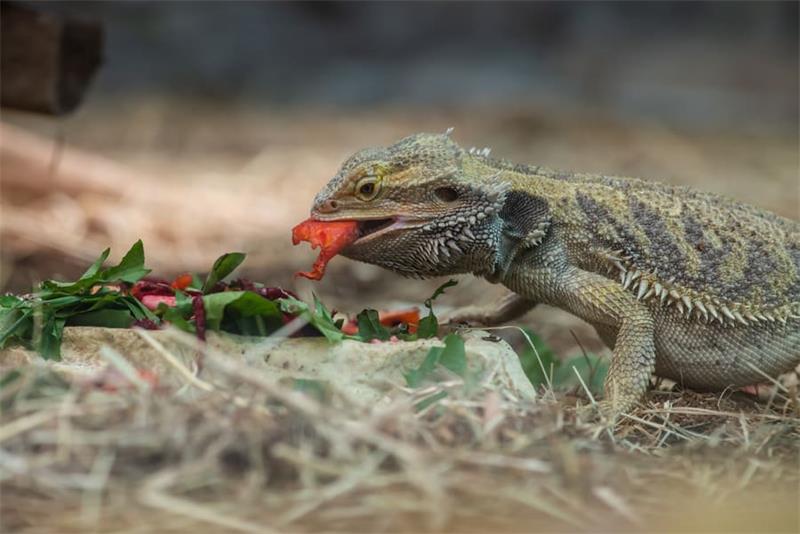
Provide Regular Veterinary Care
Regular veterinary care is important for your bearded dragon’s health and well-being. You should take your bearded dragon to a qualified reptile veterinarian at least once a year for a wellness check-up. The veterinarian will examine your bearded dragon’s physical condition, behavior, weight, appetite, feces, etc. The veterinarian will also perform some tests, such as blood tests, fecal tests, x-rays, etc., to detect any signs of illness or disease.
You should also take your bearded dragon to the veterinarian if you notice any symptoms of illness or disease. These include lethargy,
loss of appetite, weight loss, dehydration, diarrhea, constipation, impaction, vomiting, regurgitation, swelling, limping, paralysis, tremors, seizures, discharge, bleeding, infection, injury, etc. These symptoms may indicate a serious health problem that requires immediate medical attention.
You should also follow the veterinarian’s recommendations on preventive care for your bearded dragon. This may include vaccinations, deworming, parasite control, supplements, etc. Preventive care can help your bearded dragon avoid or reduce the risk of some common health problems, such as metabolic bone disease, kidney disease, respiratory infections, mouth rot, etc.
Provide Enrichment and Socialization
Enrichment and socialization are also important for your bearded dragon’s health and well-being. Enrichment and socialization can provide your bearded dragon with mental stimulation, physical activity, and emotional comfort.
Enrichment refers to providing your bearded dragon with various opportunities to explore, play, learn, and interact with their environment. You can enrich your bearded dragon’s enclosure by changing the decorations and accessories regularly, adding new items or scents, hiding food or treats, etc. You can also enrich your bearded dragon’s life by taking them out of the enclosure occasionally, letting them roam around a safe and supervised area, exposing them to different sights and sounds, etc.
Socialization refers to providing your bearded dragon with positive and appropriate interactions with other animals and humans. You can socialize your bearded dragon by handling them gently and frequently, talking to them softly and calmly, rewarding them with food or praise, etc. You can also socialize your bearded dragon with other friendly and healthy bearded dragons or other reptiles of similar size and temperament. However, you should always supervise these interactions closely and separate them if they show any signs of aggression or stress.
Enrichment and socialization can help your bearded dragon develop their personality, intelligence, confidence, and trust. They can also help your bearded dragon reduce their boredom, stress, anxiety, and depression. They can also strengthen your bond with your bearded dragon and make them more enjoyable and rewarding pets.
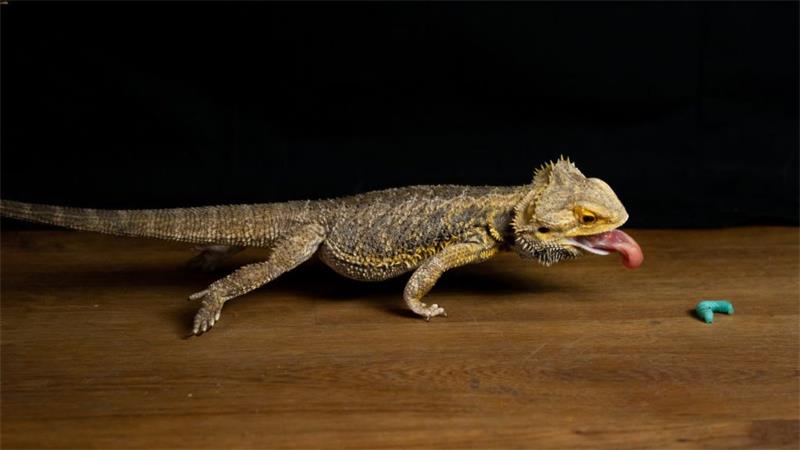
Conclusion
Bearded dragons are amazing and fascinating reptiles that can live long and healthy lives if they are cared for properly. By providing them with a balanced diet, a suitable enclosure, appropriate lighting and heating, regular veterinary care, enrichment and socialization, you can help your bearded dragon live up to their full potential.
Bearded dragons are not only pets but also companions that can bring you joy and happiness. They deserve your love and respect as well as your attention and commitment. By following the tips in this essay, you can ensure that your bearded dragon will have a happy and fulfilling life with you.
